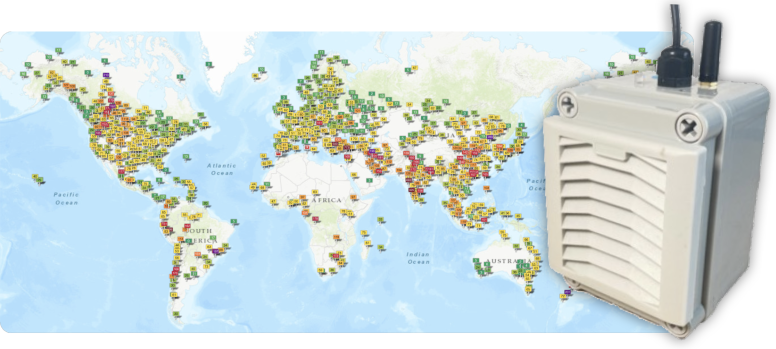
A publicação de dados sobre o projeto Índice Mundial de Qualidade do Ar é gratuita para todos. Mas também é simples e direto: tudo o que você precisa para adicionar dados ao mapa do Índice Mundial de Qualidade do Ar é fornecer um URL de feed com informações em tempo real sobre as estações de monitoramento (nome e localização), os poluentes que estão sendo medidos e o real -leituras de tempo (juntamente com as unidades, por exemplo miligramas ou ppb).
Critérios de qualificação
Observe que, historicamente, os dados publicados nos mapas do Índice Mundial de Qualidade do Ar (aqicn.org e waqi.info) eram apenas os dados oficiais fornecidos pela respectiva Agência de Proteção Ambiental de cada país (veja a lista completa da EPA ).
Os dados oficiais referem-se a dados monitorados usando BAM profissionais, TEOM e estações similares de monitoramento da qualidade do ar de alto custo. O uso dessas estações não é trivial e exige manutenção e calibração constantes pelas equipes profissionais de engenharia de campo da EPA.
No entanto, hoje em dia, estações de monitoramento da qualidade do ar baseadas em espalhamento de laser mais acessíveis são amplamente utilizadas como companheiras das estações oficiais de monitoramento da qualidade do ar. Essas estações mais acessíveis podem custar 1000 vezes menos que as estações BAM e TOEM.
Recomendamos o uso das estações semiprofissionais de monitoramento da qualidade do ar GAIA para essa finalidade. Mas também aceitamos dados de outras estações. No entanto, essas estações baseadas em contadores de partículas necessitam de reportar uma alimentação de dados melhorada com controlos de qualidade adicionais (ver secção de controlo de qualidade ).
Formato de feed
Como quase todos os países têm o seu próprio formato de relatório, o projeto do Índice Mundial de Qualidade do Ar pode aceitar qualquer tipo de formato para os feeds: podem ser em CSV, JSON ou apenas texto simples ou formato HTML. Você pode encontrar no final desta página 3 exemplos para CSV, HTML e JSON.
Para referência, verifique os feeds oficiais de Cingapura ou Holanda e observe que apesar de serem todos diferentes, eles podem ser ingeridos pelo nosso sistema.
Para contadores instantâneos de partículas de ar, você pode reportar os dados por meio de nosso próprio servidor web ou por meio do thingspeak.
Ingestão de dados
O sistema do Índice Mundial de Qualidade do Ar se encarregará de verificar regularmente os dados do feed e, sempre que uma atualização estiver disponível, ela será processada, convertida para os valores AQI da escala EPA dos EUA e publicada no site do Índice Mundial de Qualidade do Ar dentro de minutos.
Além disso, embora apenas dados de qualidade do ar PM2,5, PM10, ozônio, NO2, SO2 e CO for publicado, o sistema coleta mais poluentes para fins de previsão: Benzeno, Tolueno, Etilbenzeno, NOx, THC, NMHC, PM1, Formaldeído, Mercúrio, Amônia, Metano , Sulfeto de hidrogênio, ácido nitroso, fenol, naftaleno, paraxileno (p-Xileno), metaxileno (m-Xileno), etc.
Também é possível publicar dados meteorológicos: Temperatura, Pressão Atmosférica, Umidade, Precipitação, Velocidade do Vento, Direção do Vento, Radiação Solar e UVI. Caso não sejam fornecidas, utilizaremos outras fontes de informação meteorológica relevantes.

